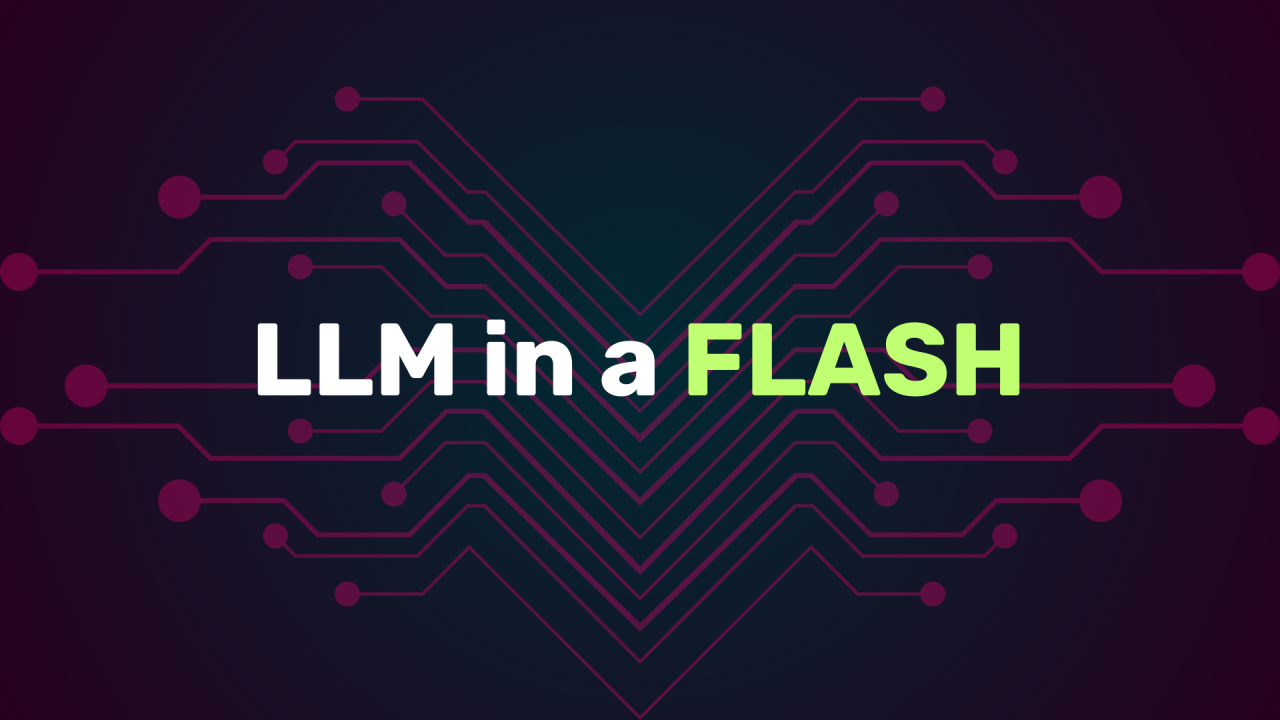
Efficient Large Language Model Inference with Limited Memory
As Large Language Models (LLMs) become increasingly central to modern natural language processing, their computational and memory demands present significant challenges. This article explores the novel strategies introduced in "LLM in a Flash" by Apple researchers, which enable efficient LLM inference on devices with limited DRAM by leveraging flash memory and innovative loading strategies.
Download the Paper here:
Introduction to the Challenges of LLM Inference
LLMs like GPT-4, Mistral, and now Gemini have shown exceptional performance across various tasks. However, the substantial computational and memory requirements for inference, especially on devices with limited DRAM, pose a substantial challenge. The standard approach of loading the entire model into DRAM severely limits the maximum model size that can run on most devices. The paper presents a method that fundamentally shifts this paradigm by utilizing flash memory alongside DRAM, offering a scalable solution to this bottleneck.
The Apple Approach:
Windowing: Reducing Data Transfer
The paper introduces "windowing" as a strategy to minimize data transfer between flash and DRAM. By loading parameters only for the past few tokens and reusing activations from recently computed tokens, the model reduces the number of I/O requests to load weights. This sliding window approach significantly decreases the volume of data transfer, mitigating the slower access speeds of flash memory.
Row-Column Bundling: Optimizing Flash Memory Use
Tailored to the sequential data access strengths of flash memory, "row-column bundling" increases the size of data chunks read from flash memory. By storing concatenated rows and columns of the up-projection and down-projection layers, the model reads larger, more contiguous chunks, increasing throughput and reducing latency.
领英推荐
Sparsity Awareness and Context-Adaptive Loading
The paper discusses leveraging the sparsity in LLMs, particularly in the FeedForward Network (FFN) layers, to selectively load only necessary parameters from flash memory. The integration of sparsity prediction and context-adaptive loading strategies allows for a more efficient inference process by minimizing the amount of data transferred from flash.
Flash Memory & LLM Inference
The research team also explains the characteristics of flash and DRAM, discussing how bandwidth and energy constraints of flash memory shape the design of their inference method. By optimizing for large sequential reads and leveraging parallelized reads, the approach maximizes the throughput from flash memory, making it viable for LLM inference.
Implementing the Approach
Data Transfer and Management
The paper emphasizes reducing data transfer and optimizing chunk sizes for improved throughput. It details the bundling of columns and rows based on neuron activation patterns and discusses strategies for managing this data efficiently once it's loaded into DRAM. This includes techniques for minimizing reallocations and rewrites within DRAM, crucial for maintaining low latency.
Demonstrating Efficacy
The paper presents a comprehensive experimental setup, evaluating the methodology using models like OPT 6.7B and a sparsified Falcon 7B. The results demonstrate significant reductions in inference latency, with the methods enabling models up to twice the size of available DRAM to run with substantial speedups compared to traditional loading approaches.
Implications
The approach detailed in "LLM in a Flash" marks a significant advance in the deployment of large language models, particularly for devices with constrained memory. By addressing the critical memory bottleneck, this method enables more efficient and effective use of LLMs, expanding their potential applications and accessibility. The paper not only offers immediate practical solutions but also sets the stage for further research into memory-efficient, high-performance AI models.